What is driving flexible workspaces?
- Employers are working in denser environments
- Changing environmental shifts
- Rising office space costs
- Mobile and remote working is on the rise
- Talent now expects flexible working environments
- Changing space trends
- Planned office refits, moves or consolidations
- Resistance to flexible working
Flexible and remote working have been growing in popularity over the last few years. The widespread availability of cloud services has made it easy to share documents and collaborate with others, while messaging services and videoconferencing allow teams to stay in touch easily.
62%: expect to see more remote working in the next year
The flexibility factor
The drastic shift to more flexible working practices has sped up even more in 2020 and is evident too in a recent customer survey we conducted. This is not only driven by the need to intensify the use of the real estate, but by the fact that in most knowledge jobs “working from anywhere” has become technically viable.
60% say Remote working improves productivity.
And with more workers having more and more choice where and when to work, the role of many offices is changing from a permanent place of work to a hub that enables workers to turn up and find a space for a given activity—that may be a meeting, collaboration, or focused work.
68% say changes in the design of their workspaces has significantly improved productivity.
Modern Workplace Report, 2020
Efficiently using your space
The modern workspace is efficient and flexible – but only when employees buy in. Condeco gives people freedom and choice in the workplace, helps them find space to work in, each other, and connect better via remote working.
In the CBRE Global Occupier Survey 2017,
58 percent of business leaders cite space efficiency as the key to cost management.
There has been a shift away from a narrative that purely focuses on space reduction, to one that focuses on the effectiveness of the space provided; this according to The Modern Workplace Report 2020 citing that 68% percent of business leaders stating that changes in workspace design has significantly improved productivity.
Although slightly over half of customers asked in our recent survey see real estate reduction as important, only a quarter sees it as extremely important. So, space efficiency is important, but it’s no longer the most foremost topic; however, employee experience is.
Using workspace data to make better design decisions is a key driver. In our survey, 62% of our customers stated that enabling data-driven design is an important or extremely important goal when working with us. Data-driven design focuses on workspace data such as usage, utilization, and satisfaction to make better planning decisions; to improve workspace quality, employee productivity, overall satisfaction, and employee wellbeing.
By taking the friction out of flexible workspace, so it’s smooth, intuitive and adopted. As a result, you get more effective and efficient use of space, as well as smart analytics to help you plan better.
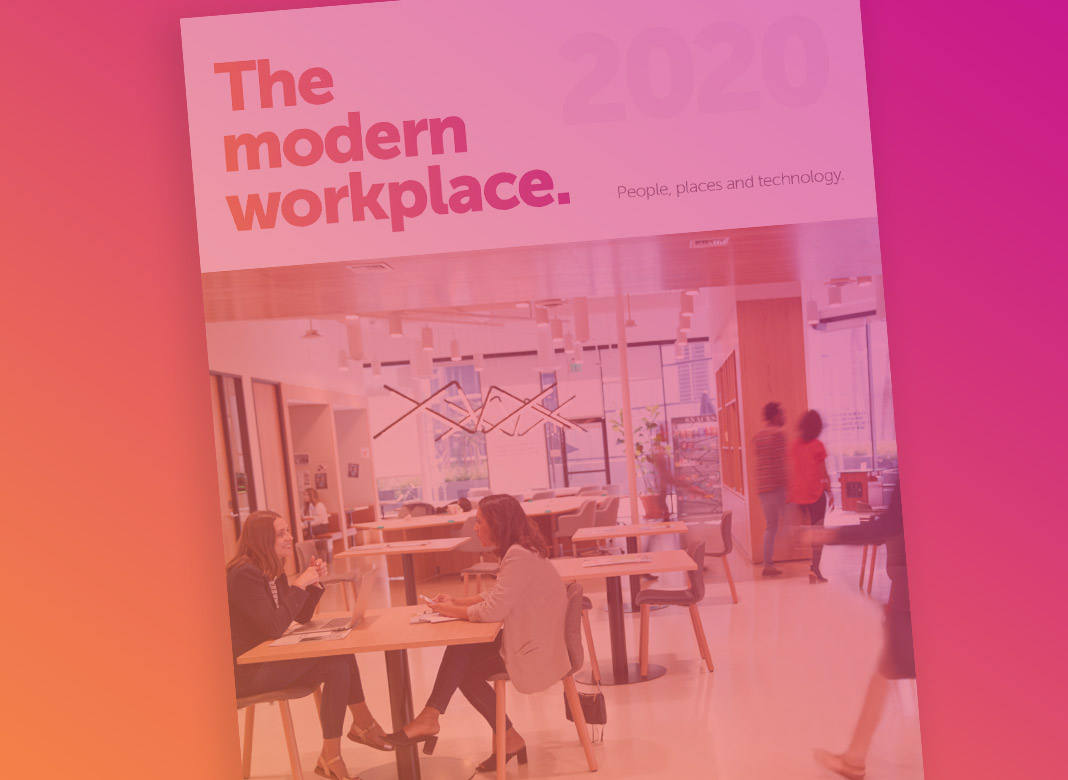
The modern workplace 2020 report
Download the research for the latest insights and trends on what is shaping the modern workplace. With valuable statistical insights on important topics:
- Flexible working and employee experience
- Collaboration for workspace productivity
- The connected workplace
Choice and Control
People are increasingly working flexible hours and in remote locations. But this change sometimes faces resistance from employees. The workspace is not set up for flexibility. For these reasons, flexible Working can be hard to implement and manage. Give people freedom and choice over their workspace, so they adopt flexible working and the organization benefits from efficient use of space.
Flexibility is not only about working hours but also how the work gets done. Just over half of the respondents in The Modern Workplace Report 2020 (54 percent) say they now have flexible, shared workspaces within their offices. These spaces can be adapted to the needs of the occasion and the working cultures of those using them. A simple ‘break-out’ area, for example, could be a space for a quiet breather on a busy day, an ad hoc team meeting or a place to quickly collaborate on a small project.
The availability of different spaces to give that choice is key, but what types of spaces do you need?
“You have to measure ROI. I need to be able to allocate capacity. Generally, we allow 100 square feet per person. However, I would welcome the ability to crunch the numbers a bit more.”
C-Suite, USA
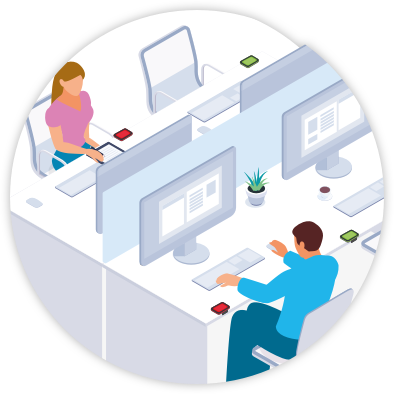
Flexible Desk Space
The practice of allocating desks to workers when they are required, rather than giving each worker their own desk – allowing employees to move around the office to accommodate different daily activities.
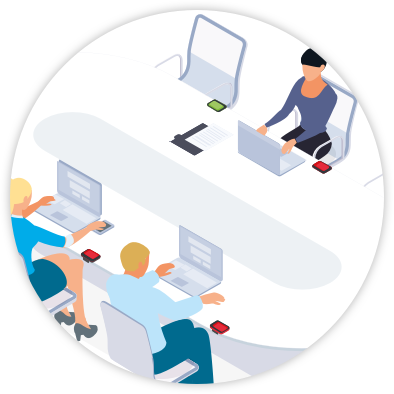
Collaboration Space
Spaces which provide co-workers a place to meet and share ideas. The space can be as informal as a big table in the break room or as formal as a walled conference room.

Informal Meeting
Semi-private space that is commonly used for collaborative sessions and ad-hoc meetings.

Breakout Space
Any space open to the workforce and visitors which is separate from the usual working area. This area is designed for employees to relax, eat lunch or collaborate in an informal manner.
Then how do we not only manage the usage of these spaces, make it quick and easy to reserve the spaces for employees and also use technology to monitor how spaces are being utilized to ensure we have provisioned the right mix of space to ensure our employees can be most productive.
Securing employee adoption
By looking at the overall workplace experience and putting the employee at the center of your plan will lead to creating a workplace which not only fit for purpose but also supports employees to meet their goals.
No longer are employees trapped to the confines of their allocated desk, heads down and limited interaction with their nearby colleagues. The way we want to work today means the workplace has to shift in its form to support a more fluid, collaborative way of working. Office design has changed to support a more flexible working methodology with spaces to suit different needs such as co-working, collaboration spaces, and breakout spaces.
But it’s not just how efficiently people can find a space for their meeting or a workstation that meets their needs of the day. There is a larger trend towards looking at the entire employee experience. We often hear words such as “curated experiences”. A workplace experience that puts the employee at the center.
The reason for this however, is not just talent attraction and retention in a competitive employment market, but also simply productivity—helping staff work more efficiently and get easy access to what they need, rather than spending their day navigating a landscape of disparate systems and services.
An overwhelming 94 percent of respondents in The Modern Workplace Report 2020 agreed that technology is important to the employee experience.
By taking the friction out of flexible workspace, Condeco workspace reservation technology aids employees to easily find and book space to meet their workday needs. As a result, there is a reduced admin burden on roles in the business like Facilities Managers (FM), so that the focus can be more on service and enablement. The outcome is satisfied employees and a more strategic role for FM.
“We have put a heightened focus on culture, I put team building at the heart of our workspace design.”
Facilities Manager, USA
Enabling a connected workforce
Working practices often mean that companies are slow to change.
22% still have to ask IT for support for video conferences.
Integrating workspace management tools and data is seen by 84% of our customers as an important or extremely important goal, along with enabling the next generation smart buildings—a goal that is important or extremely important to 65% of our customers. The connected workplace revolution is still in its beginnings and will create buildings that are more efficient, sustainable, with a better experience for its occupants. Bringing many of the topics together: the drive for more efficient management of space, a better occupant experience, the ability to create a connected ecosystem of solutions, and the need for continued data-driven improvement to the work environment.
With intuitive workspace reservation software, this can be done with minimal disruption. We reduce friction in day to day working methods. This helps people adapt and achieve more. By reducing the friction in change, people embrace it and the organization becomes more agile as a whole.
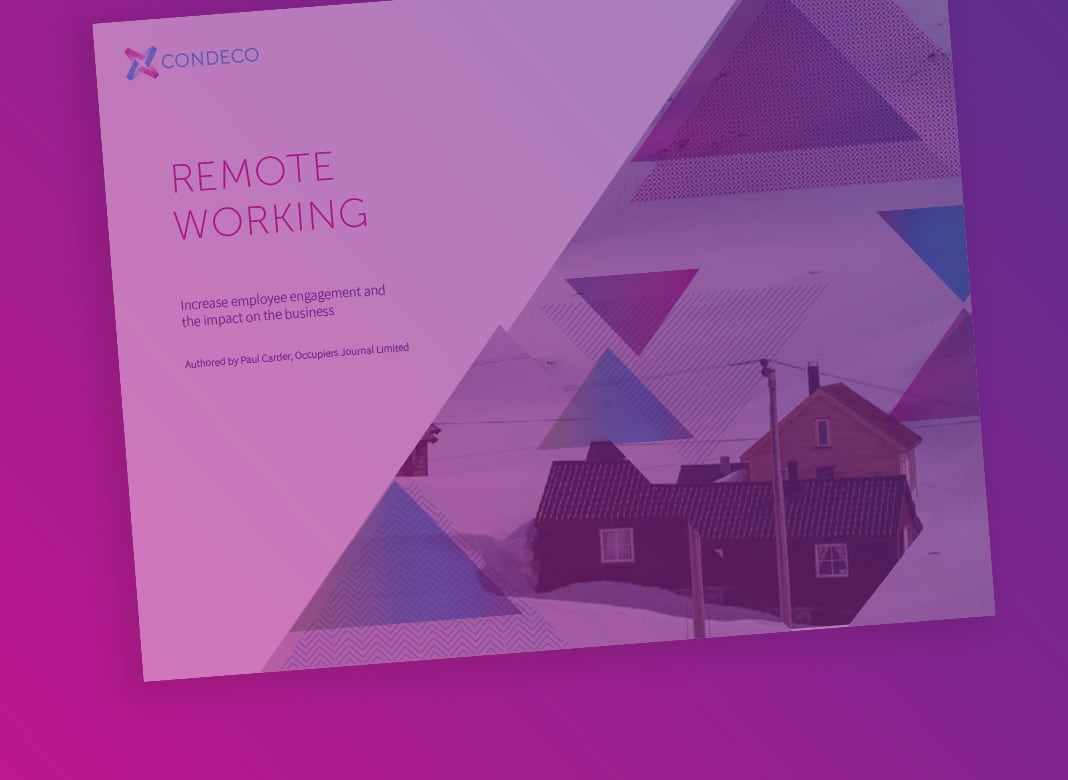
Remote Working Whitepaper
Make remote working work for your business with a system based on trust and technology. Read our ten-step process and become a corporate Placemaker with remote control.
The strategic advantage
Agility is an increasingly important strategic advantage, but it’s hard to achieve. That’s because working practices are outdated, employees do too much admin, and lack the work, space or the time to be more productive. This is the workplace of the past: stagnant.
The workplace will change its role but will continue to be important as a place where people can meet and collaborate, belong to a team and, critically, feel part of a culture.
Statistics from The Modern Workplace Report 2020 state that 62% of employees have access to collaboration and internal communication applications. This is aiding in the trend to get people back to the office, and as such, more and more employers will make the office a destination, spaces that bring together workspace, food services, leisure and community facilities under one roof – and a rise in this application statistic in the next year.
Therefore, enabling the next generation of flexible, activity-based workspaces is an important focus area for businesses with effortless management of activity-based workspace; data-driven workspace design; connected workplace integrations; and simple, mobile and calendar-centric reservation tools that enable a first-class employee experience.
By making the day-to day-work easier, improving employee experience, and facilitate a shift in culture to be more collaborative, so that businesses can move faster and achieve more.
“I’m convinced that properly designed workspaces improve productivity…it makes intuitive sense. I think we focus on getting the basics right – good sized desks, comfortable chairs, IT that generally works but I don’t know how much thought goes into beyond that.”
C-Suite, UK
Maximizing your employee productivity
Employee productivity is more important than ever, but people tend to resist change.
Top three workplace challenges:
- Technology adoption
- Talent retention + employee experience
- Digital transformation
Condeco smooths friction in ways of working and reduces the admin burden on employees, so that they can adapt more easily and are more likely to adopt the change your business needs: from flexible working to greater collaboration. Create the smoothest possible operation with Condeco, to empower people, and your business to change.
Creating a liberated workspace
People are increasingly working flexible hours and in remote locations, but this change sometimes faces resistance from employees. The workspace is not set up for flexibility. For these reasons, flexible working can be hard to implement and manage. Condeco is one platform to manage the workspace and give people freedom and choice over their workspace, so they adopt flexible working and the organization benefits from efficient use of space.
We can help introduce flexible working
We give you the tools and data to implement and manage desk sharing and activity-based working schemes; helping you create a better workplace experience for an agile workforce.
We can give employees choice and control
Give your employees more choice in the workplace by enabling them to reserve a workspace that meets their needs—on their mobile, on the web, on kiosks or digital desk screens.
We can help improve productivity and satisfaction
Give people more choice where and when they like to work, give them the ability to reserve a workspace that meets their actual needs; whether it’s for concentration, collaboration or contemplation; which improve productivity and workplace satisfaction.
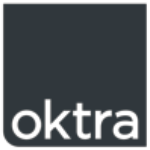
“Using Condeco desk booking has allowed us to create workplace neighbourhoods; teams who work on the same discipline or department have priority booking. Using this technology allows us to truly embrace activity-based working.”
Nic Pryke, Design Director, Oktra
Additional Reading

Remote working whitepaper
With remote working on the rise, this makes it critical that workers feel trusted to do their jobs the way they want to.
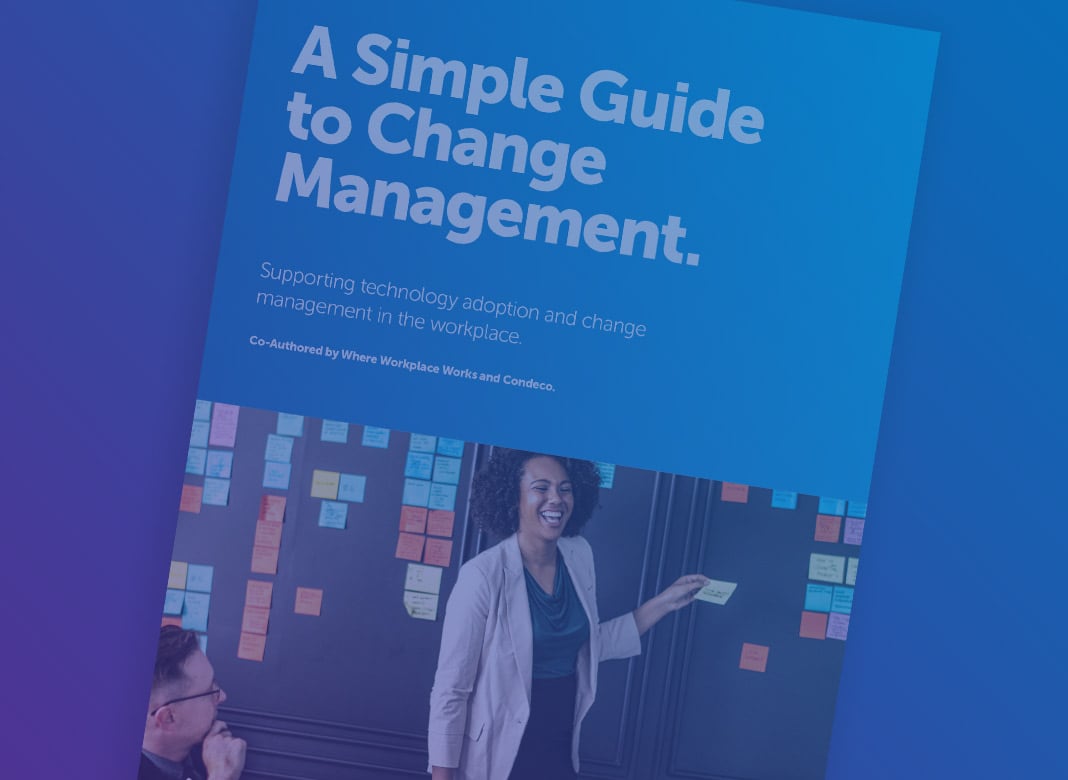
A simple guide to change management
The unprecedented speed of change within our workplaces needs careful management to ensure you’re taking best advantage for your business. This eBook explains the why and how.
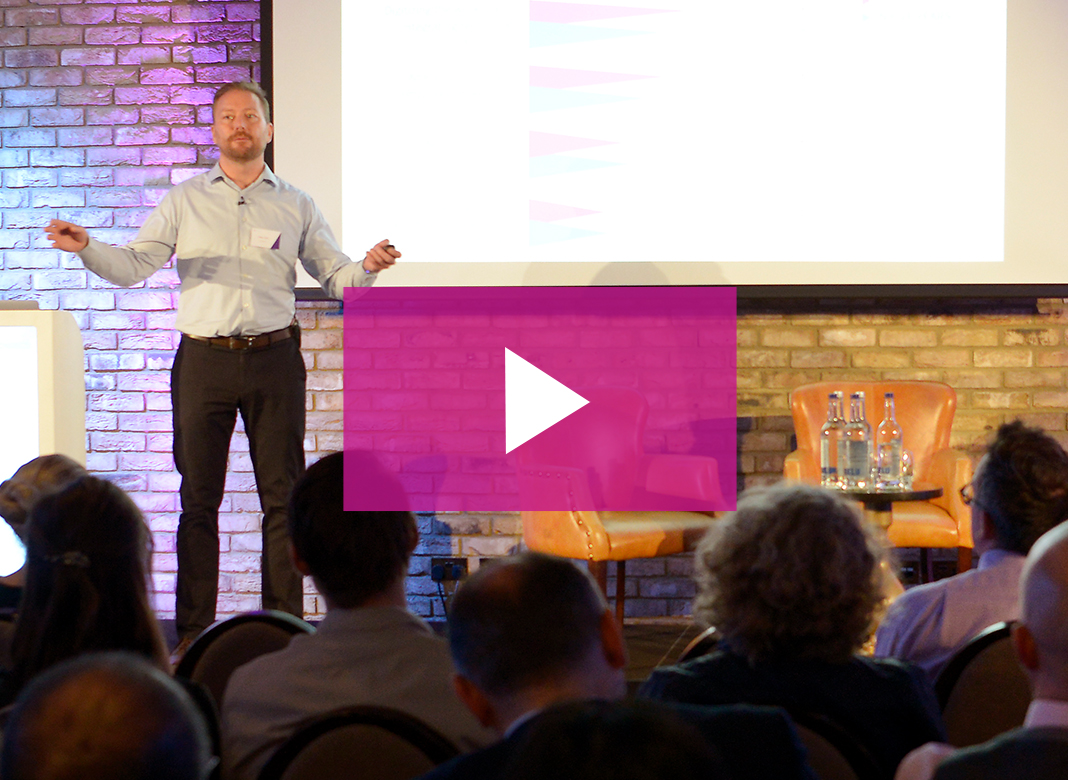
Futuristic technologies transforming your workplace Video
Looking at the top future technologies that will transform and influence your workplace.
Watch Futuristic Technologies Transforming Your Workplace Video


